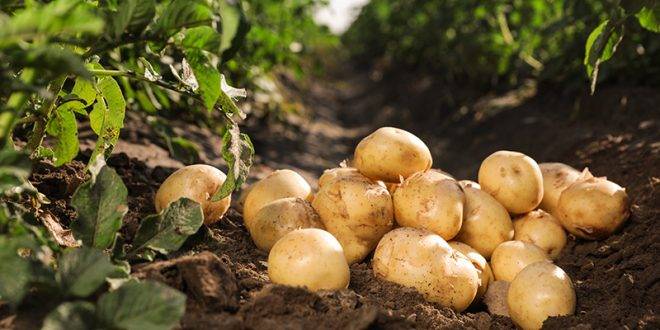
Potato is consumed by more than 1 billion people in the world making it one of the most widely cultivated & consumed commercial crop. In India, it is the 4th most important food crop after rice, wheat & maize. Approximately, 1.9 million hectares of land is under potato cultivation in India with a total production of 22.8 MT. India’s vegetable basket would be incomplete without Potato, such is its importance!
For farmers of Uttar Pradesh, West Bengal, Bihar, Gujarat & Madhya Pradesh, it is the most important crop as their livelihood depends on it. However, potato is susceptible to many diseases and the most destructive is “The Late Blight”. It is particularly dangerous as it can lead to 80- 100% crop loss if left untreated! But you don’t have to worry as in this article, we will tell you about the “Management & Prevention of Late Blight of Potato”.
Late Blight of Potato:
Late Blight is caused due to the attack of the fungus, Phytopthora infestans. It is a deadly disease that can result in total crop failure in a very short duration. In order to prevent & control it, it is important to understand its symptoms.
Late Blight of Potato: Symptoms
This disease affects leaves, stems and tubers. Leaves appear blistered as if scalded by hot water and eventually rot and dry out.
When drying out, leaves turn brown or black in color. When infections are still active, spots appear on the back side of leaves blanketed in what looks like flour.
Affected stems begin to blacken from their tips, and eventually rot.
Severe infections cause all foliage to rot, dry out and fall to the ground, stems to dry out and plants to die.
Affected tubers display dry brown-colored spots on their skins and flesh. This disease acts very quickly. If it is not controlled, infected plants will die within two or three days.
Late Blight in Potato: Control Measures
It has been observed that late blight of potato generally makes its appearance on Kufri Chandramukhi and Kufri Pukhraj. Therefore, it is advisable to spray the crop at this time with protectant fungicides such as mancozeb (IndofilM-45/Mass M-45/Markzeb) or cholorothalonil (Kavach) or propineb (Antracol) each @ 500-700 gm/acre or Blitox-50/Markcopper @ 750-1000 gm/acre. However, these fungicides have to be applied as preventive measures and the spray is to be repeated after 7 days. Once the infection has established and symptoms developed, these fungicides prove ineffective.
Successful control of the disease depends on both efficacy of the fungicide and good foliage coverage with the spray solution. The neighboring farmers should also be advised to spray crops with fungicides so that the inoculum of the disease is minimized.
Under more favorable weather conditions (highly humid due to rains, foggy, cloudy weather), late blight is likely to develop in an epidemic form.
Under these conditions, sprays of systemic fungicides in pre-packed mixture with protectants such as RidomilGold (8 % mefanoxam + 64 % mancozeb) or Curzate M-8 (8% cymoxanil + 64% mancozeb), Sectin (10% fenamidon+50% mancozeb) @ 700 g/acre or Revus (mandipropamid 250SC) or Equation pro (16.6% famoxadone+22.1% cymoxanil) @ 200ml/acre should be given and repeated once at 10 days interval.
On successive late sown crops and spring crop, if the preceding crop is already attacked by late blight and the inoculum is abundantly present, the first spray may be given with Ridomil Gold, followed by Indofil M-45 sprays at weekly intervals. (Source: PAU)
One thing to keep in mind is that success in disease prevention & control not only depends on the use of correct chemicals but also on their proper & uniform application by careful selection of sprayers. And one of the best in the market is STIHL’s SG 230 Portable Sprayer.

This sprayer has a 12.2 litre/minute discharge rate with 25-30 feet of vertical reach. It also has a 50-meter long delivery hose that helps to reach isolated areas easily. What makes it the farmers’ favorite is how it makes pesticide spraying so easy & effortless; approximately 2,800 sq m of the area can be covered without even moving the equipment. So, If you are planning to buy a new sprayer, Please contact on
Phone number: 9028411222
Website: www. stihl.in
Email: info@ stihl.in
















